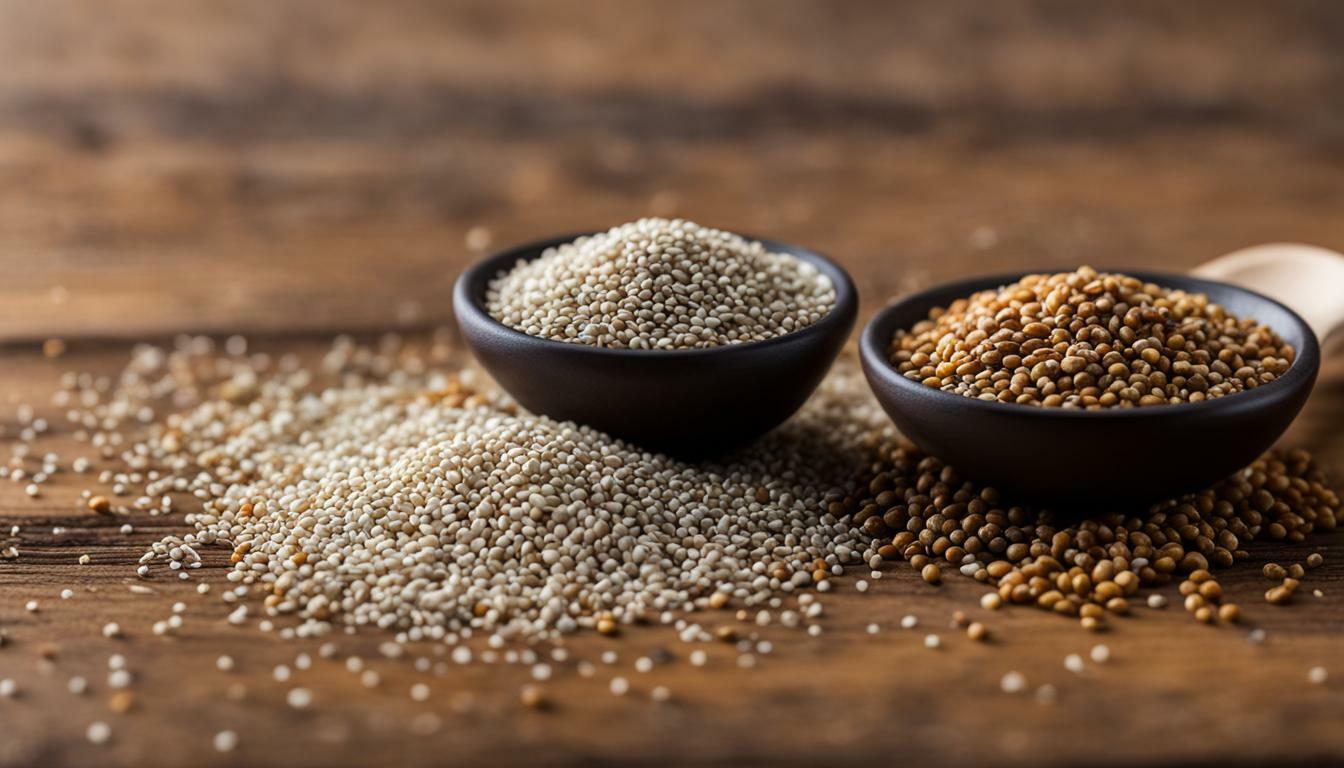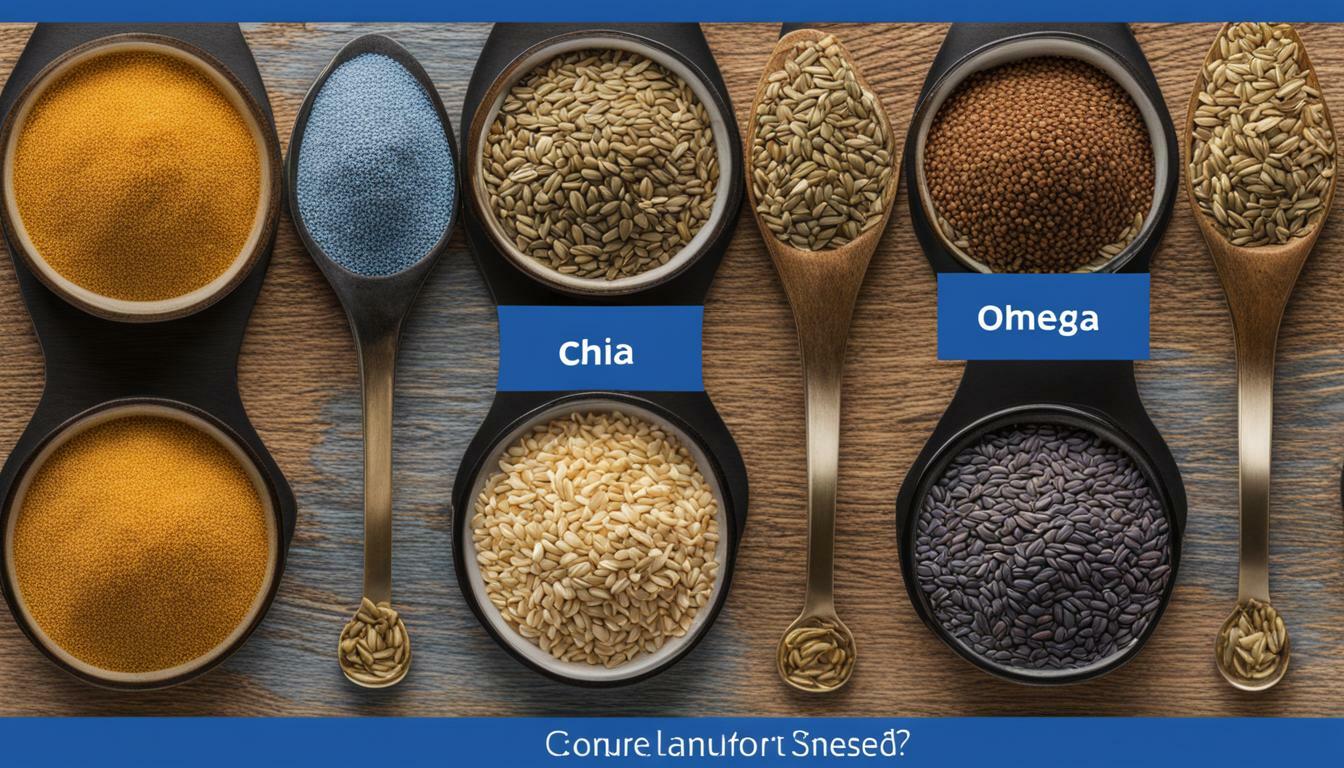Chia seeds come in two main colors – white and brown. Understanding the difference between these two varieties is important for those looking to incorporate chia seeds into their diet.
Key Takeaways:
- White and brown chia seeds differ only in color, with white seeds being the result of a recessive gene and brown seeds indicating immaturity or exposure to unfavorable environmental conditions.
- Both white and brown chia seeds have similar nutritional profiles, including high protein and fiber content, omega-3 fatty acids, vitamins, minerals, and antioxidants.
- The taste of white and black chia seeds is indistinguishable, but some may prefer white seeds for their ability to blend in with other foods.
- White chia seeds are generally more expensive due to their rarity, but they do not provide any additional health benefits compared to brown seeds.
Now that we have explored the key differences between white and brown chia seeds, you can make an informed decision based on your personal preference and culinary considerations.
Genetic and Environmental Factors Influencing Color
The color difference between white and brown chia seeds is primarily determined by genetics and environmental factors, not nutritional value. White chia seeds are not genetically different or nutritionally superior to black chia seeds. Their distinctive color is the result of a recessive gene, while brown chia seeds indicate either immaturity or exposure to unfavorable environmental conditions.
It’s important to note that both white and black chia seeds offer similar nutritional benefits. They are packed with protein, fiber, omega-3 fatty acids, vitamins, minerals, and antioxidants. Whether you choose white or brown chia seeds, you can be confident in the health benefits they provide.
When it comes to taste, there is no noticeable difference between white and black chia seeds. However, some individuals may prefer white chia seeds due to their ability to blend in seamlessly with other foods. This makes them a versatile ingredient that can be easily incorporated into a variety of dishes.
While white chia seeds may be more expensive than their brown counterparts, this is primarily due to their rarity. It’s important to understand that white chia seeds do not provide any additional health benefits compared to black seeds. Therefore, the choice between white and brown chia seeds ultimately comes down to personal preference and culinary considerations.
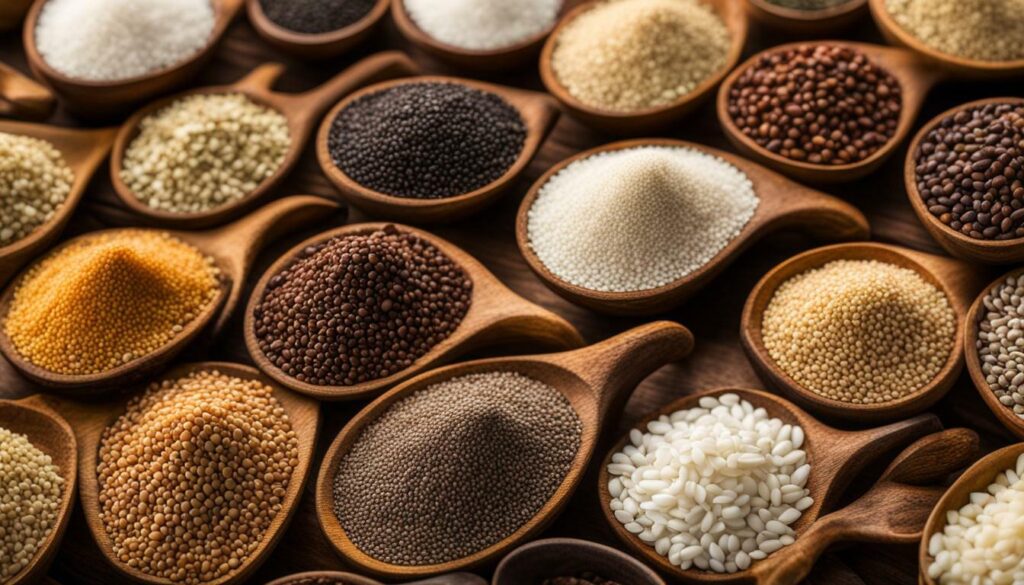
| White Chia Seeds | Brown Chia Seeds |
|---|---|
| Color: White | Color: Brown |
| Genetics: Recessive gene | Genetics: Indication of immaturity or exposure to unfavorable conditions |
| Nutritional Benefits: High protein, fiber, omega-3 fatty acids, vitamins, minerals, and antioxidants | Nutritional Benefits: High protein, fiber, omega-3 fatty acids, vitamins, minerals, and antioxidants |
| Taste: Indistinguishable from black chia seeds | Taste: Indistinguishable from white chia seeds |
| Price: More expensive due to rarity, but no additional health benefits | Price: More affordable, with similar nutritional benefits as white chia seeds |
Nutritional Profile of White and Brown Chia Seeds
Both white and brown chia seeds offer a range of nutritional benefits, including high protein and fiber content, omega-3 fatty acids, vitamins, minerals, and antioxidants. Despite their color differences, these tiny seeds pack a powerful punch when it comes to their nutritional value.
Chia seeds are known for their high protein content, making them an excellent plant-based protein source for vegetarians and vegans. Just one ounce (28 grams) of chia seeds contains approximately 4 grams of protein, which is 8% of the recommended daily intake for adults.
In addition to protein, chia seeds are also rich in dietary fiber. Fiber is crucial for maintaining a healthy digestive system and can help regulate blood sugar levels. One ounce of chia seeds contains a whopping 10 grams of fiber, which is 36% of the recommended daily intake.
The omega-3 fatty acids found in chia seeds are another notable nutritional benefit. These essential fatty acids are known for their heart-healthy properties and can help reduce inflammation in the body. Chia seeds are one of the richest plant sources of omega-3s, with one ounce providing approximately 5 grams of these beneficial fats.
| Nutrient | White Chia Seeds (per ounce) | Brown Chia Seeds (per ounce) |
|---|---|---|
| Protein | 4 grams | 4 grams |
| Fiber | 10 grams | 10 grams |
| Omega-3 Fatty Acids | 5 grams | 5 grams |
| Vitamins | Various | Various |
| Minerals | Various | Various |
| Antioxidants | Various | Various |
As shown in the table, the nutritional content of white and brown chia seeds is nearly identical. Both varieties provide the same essential nutrients, allowing you to reap the benefits regardless of the seed’s color. So, whether you choose to sprinkle white or brown chia seeds on your smoothies, yogurt, or salads, you can be confident that you’re nourishing your body with a nutrient-dense superfood.
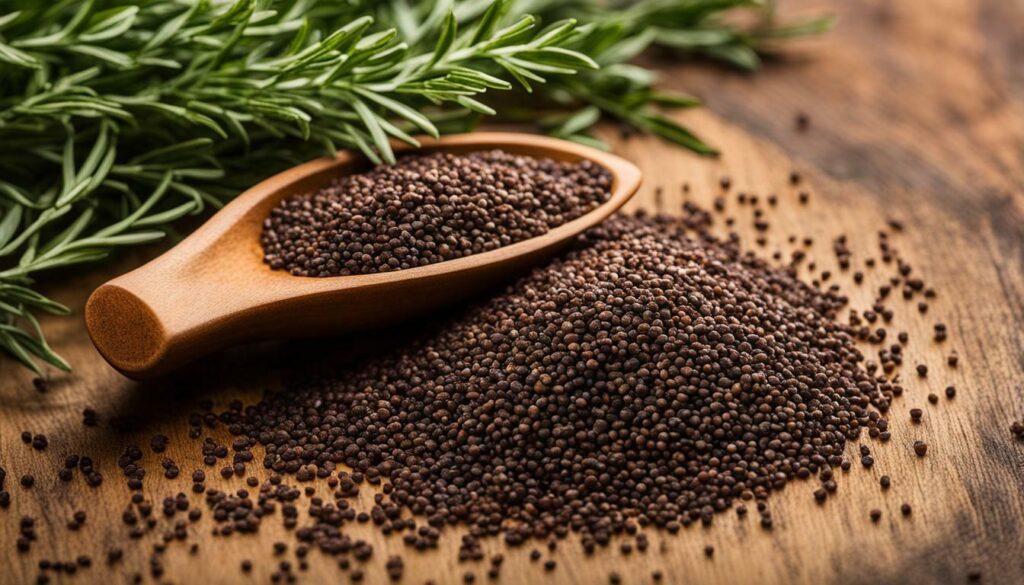
Remember, it’s important to incorporate chia seeds into a balanced diet to maximize their health benefits. While chia seeds are a nutritious addition to your meals, it’s always best to consult with a healthcare professional or registered dietitian for personalized dietary advice.
Taste and Culinary Considerations
When it comes to taste, there is no significant difference between white and brown chia seeds, but personal preferences may vary. Both varieties have a mild, nutty flavor that can easily blend into a variety of dishes. White chia seeds, in particular, are favored by those looking to maintain the visual appeal of their meals, as they seamlessly blend with lighter-colored foods. Whether you choose white or brown chia seeds, you can enjoy their nutritional benefits without compromising on taste or texture.
White chia seeds are often incorporated into smoothies, yogurt, and baked goods, adding a subtle crunch and enhancing the overall nutritional profile of the dish. They can also be used as a vegan egg substitute in recipes, thanks to their gel-like consistency when soaked in liquid. Brown chia seeds, on the other hand, are commonly used in puddings, porridge, and savory dishes, where their slightly denser texture and earthy flavor can complement the other ingredients.
| White Chia Seeds | Brown Chia Seeds |
|---|---|
| Blend well with lighter-colored foods | Adds a slightly earthy flavor |
| Ideal for smoothies, yogurt, and baked goods | Great for puddings, porridge, and savory dishes |
| Vegan egg substitute in recipes | Offers a dense texture |
When it comes to weight loss, both white and brown chia seeds can be beneficial due to their high fiber and protein content. These nutrients promote feelings of fullness, helping to curb cravings and manage appetite. White chia seeds, in particular, have gained popularity among weight-conscious individuals due to their visual appeal and versatility in various dishes. On the other hand, brown chia seeds are known for their digestive benefits, as they are more likely to have undergone the natural ripening process, making them easier to digest.
Regardless of which color you choose, incorporating chia seeds into your diet can be a great way to boost your overall health and nutrition. They are a versatile and nutrient-dense addition to your meals, providing an ample supply of protein, fiber, omega-3 fatty acids, vitamins, minerals, and antioxidants. So go ahead and experiment with both white and brown chia seeds to discover which one suits your taste preferences and culinary needs.
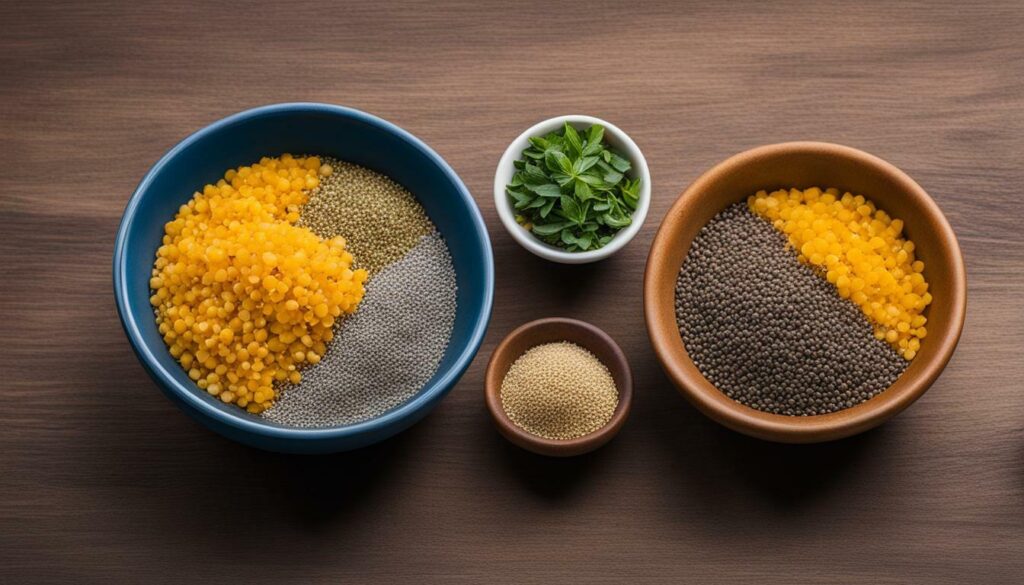
White chia seeds tend to be more expensive than brown chia seeds due to their limited availability, although there is no significant difference in terms of their nutritional value. This price disparity can be attributed to the rarity of white chia seeds, which are less commonly cultivated than their brown counterparts. Despite their higher cost, it is important to note that white chia seeds do not offer any additional health benefits compared to brown chia seeds.
In terms of availability, brown chia seeds are more widely accessible and can be found in most grocery stores and health food markets. They are a popular choice among consumers looking to incorporate chia seeds into their diets for their numerous health benefits and versatility in cooking and baking. On the other hand, white chia seeds may be more challenging to find, requiring specialized retailers or online sources.
When deciding between white and brown chia seeds, it is essential to consider your personal preferences and budget. While white chia seeds have a unique aesthetic appeal and may blend more seamlessly into certain recipes, they come at a higher price point. Conversely, brown chia seeds offer the same nutritional benefits and are readily available at a more affordable cost.
Table: Nutritional Comparison of White and Brown Chia Seeds
| Nutrient | White Chia Seeds | Brown Chia Seeds |
|---|---|---|
| Protein (per 1 oz) | 4 grams | 4 grams |
| Fiber (per 1 oz) | 11 grams | 11 grams |
| Omega-3 Fatty Acids (per 1 oz) | 5 grams | 5 grams |
| Vitamin C (per 1 oz) | 0.1 mg | 0.1 mg |
| Iron (per 1 oz) | 1 mg | 1 mg |
“White chia seeds tend to be more expensive due to their rarity, but they do not provide any additional health benefits compared to brown chia seeds.”
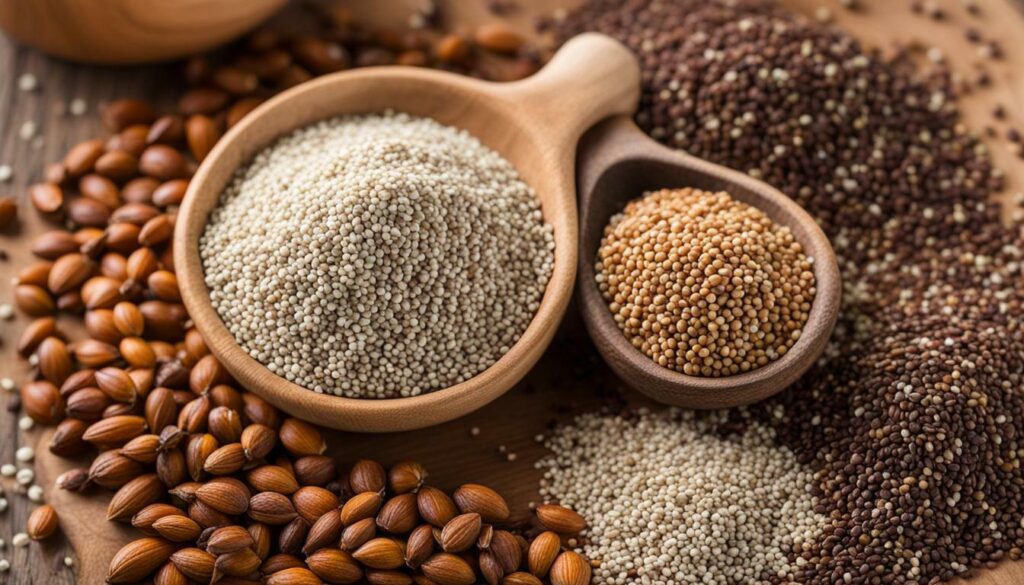
In conclusion, the choice between white and brown chia seeds ultimately comes down to personal preference, culinary considerations, and budget. Both varieties offer similar nutritional profiles and can be incorporated into a balanced diet to reap the numerous health benefits chia seeds provide. Whether you choose the visually striking white chia seeds or the more readily available brown chia seeds, both options are excellent additions to a healthy lifestyle.
Conclusion
In conclusion, while white and brown chia seeds differ in color, they share similar nutritional profiles and offer numerous health benefits. The choice between the two depends on personal preference and individual culinary needs.
White chia seeds are not genetically different or nutritionally superior to black chia seeds. The colors are determined by genetics, with white chia seeds being a result of a recessive gene. Brown chia seeds, on the other hand, are a sign of immaturity or exposure to unfavorable environmental conditions.
Both white and black chia seeds have similar nutritional profiles, including high protein and fiber content, omega-3 fatty acids, vitamins, minerals, and antioxidants. The taste of white and black chia seeds is indistinguishable, making them equally versatile in various dishes.
Some individuals may prefer white chia seeds for their ability to blend in with other foods seamlessly. Additionally, white chia seeds are often associated with potential weight loss benefits. On the other hand, brown chia seeds are known for their digestive advantages.
It is worth noting that white chia seeds are generally more expensive due to their rarity. However, it is important to emphasize that they do not provide any additional health benefits compared to black seeds. Therefore, the choice between white and brown chia seeds ultimately comes down to personal preference and culinary considerations.
FAQ
What is the difference between white and brown chia seeds?
The difference between white and brown chia seeds lies in their color. White chia seeds are not genetically different or nutritionally superior to black chia seeds.
What determines the color of chia seeds?
The colors of chia seeds are determined by genetics, with white chia seeds being a result of a recessive gene. Brown chia seeds are a sign of immaturity or exposure to unfavorable environmental conditions.
Do white and black chia seeds have different nutritional profiles?
No, both white and black chia seeds have similar nutritional profiles. They are both high in protein and fiber content, omega-3 fatty acids, vitamins, minerals, and antioxidants.
Is there a difference in taste between white and black chia seeds?
No, the taste of white and black chia seeds is indistinguishable.
Why might someone prefer white chia seeds?
Some people may prefer white chia seeds for their ability to blend in with other foods.
Are white chia seeds more expensive?
Yes, white chia seeds are generally more expensive due to their rarity. However, they do not provide any additional health benefits compared to black seeds.
 Skip to main content
Skip to main content